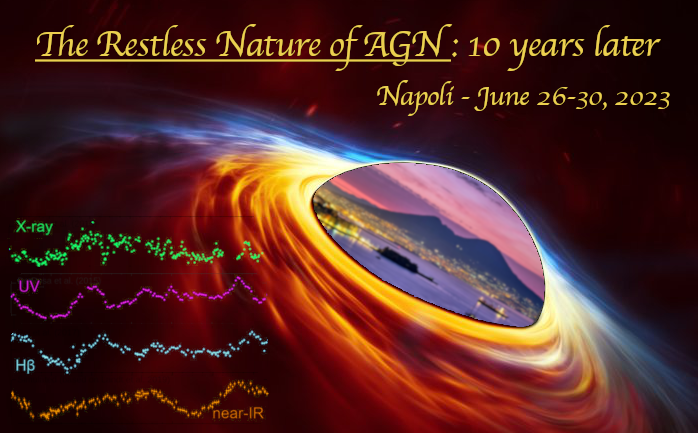Speaker
Description
We present the results of a South African Large Telescope (SALT) spectroscopic monitoring to study the time variability of C IV BALs in a sample of 64 quasars showing ultra-fast outflow (UFO) with v$_{outflow,max}$ > 15000 kms$^{-1}$ in their spectra. We also created a sample of non-BAL quasars from SDSS DR12 matched in redshift and luminosity. Our UFOs show more blueshift of CIV BEL than that of non-BALs in the control sample. The fraction of “highly variable” BALs (with fractional change in equivalent width, $\frac{\Delta W}{W}$ > 2) in our sample is considerably higher than that reported for the general BAL population. We find that the strength of variability increases with time, and for each source, SALT observations enabled us to look at the variability at different time scales ( from as short as < 0.5 years to longer time scales of > 7.5 years) in detail. We also show that the fraction of highly variable BALs increases with time, and for these BALs, the BAL strengthening time scale is found to be considerably shorter than the weakening time scales. We found no correlation between BAL variability and quasar properties such as black hole mass and Eddington ratio but found a moderate correlation with bolometric luminosity for time scales < 2 years. Based on the properties of C IV absorption, we find weak, high-velocity, shallow, and low-width BALs tend to show more variability. We also classified the BALs according to their absorption profile shape and found detached profiles at high velocities showing large variations irrespective of the strength of absorption. We conclude both the low-equivalent width and high-velocity nature of BALs are equally important for excess BAL variability. Interestingly our results suggest that the presence of a distinct BAL trough at lower velocities increases the chances of observing a highly variable UFO BAL if present. Finally, using photometric light curves, we show that the continuum flux variations may be responsible for the observed BAL variability in the majority of the sources where the EW of the BAL decreases as the continuum increases.

